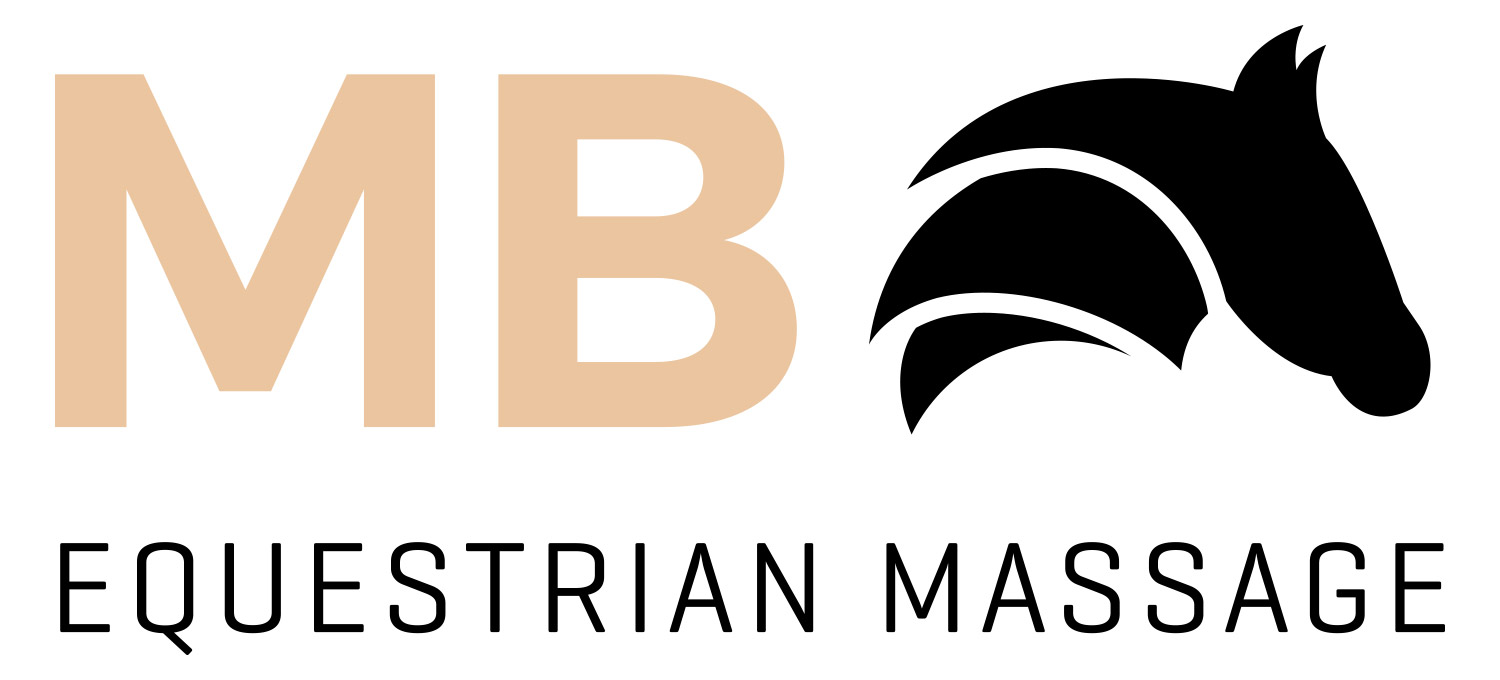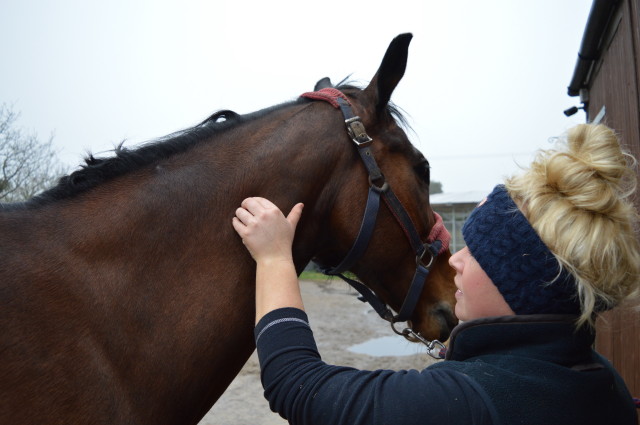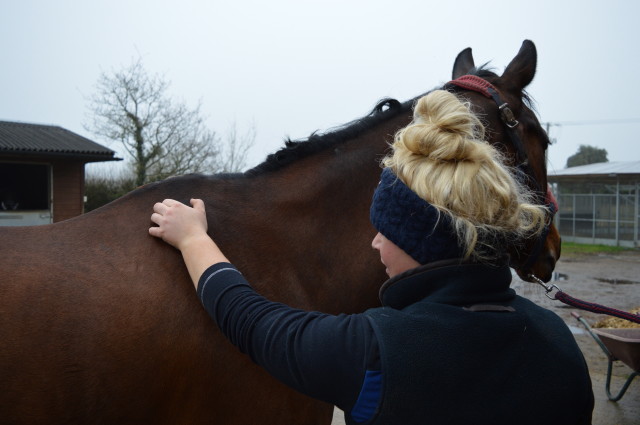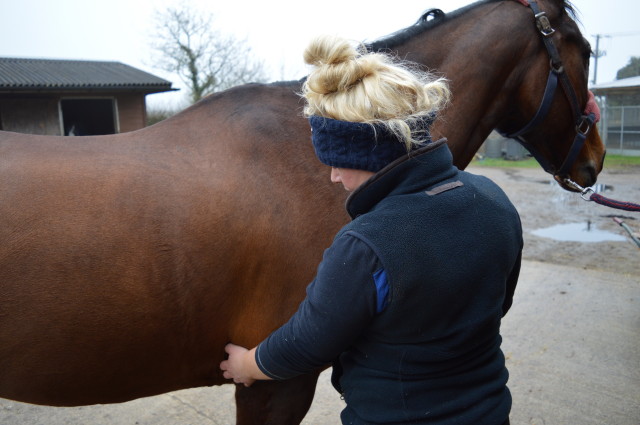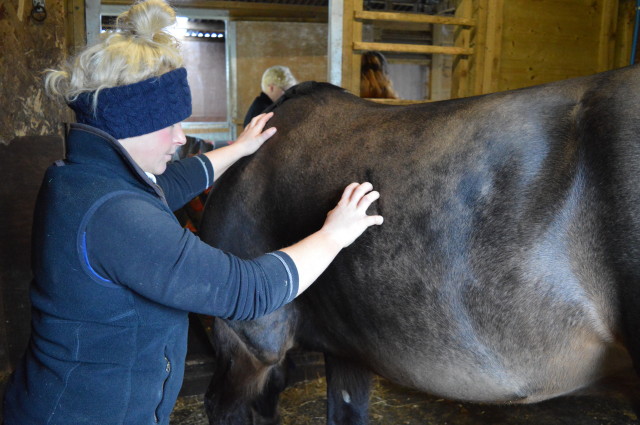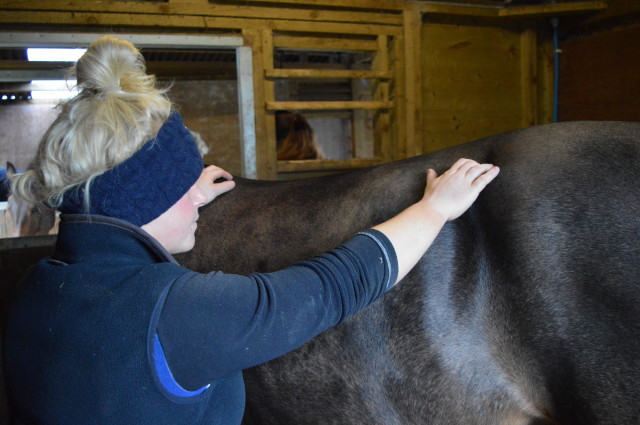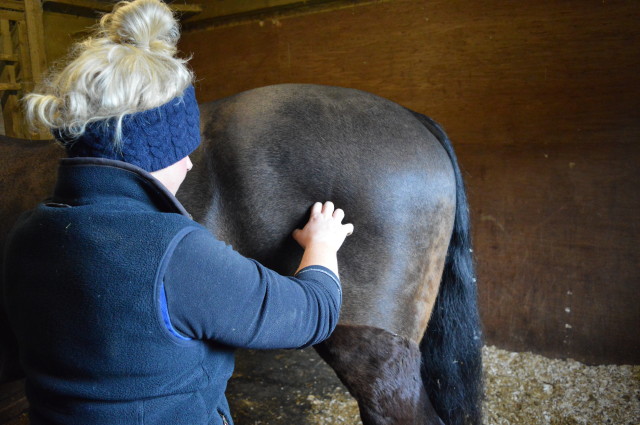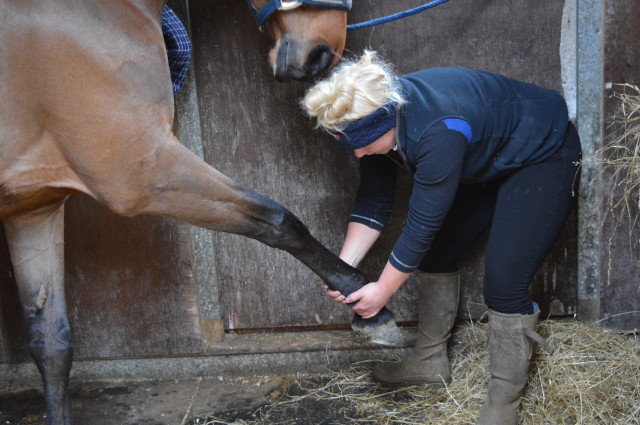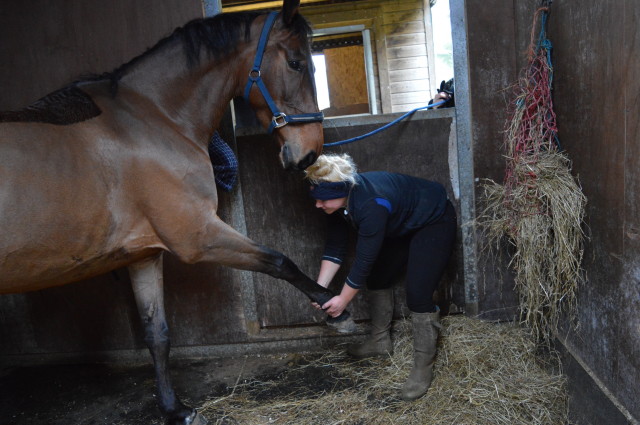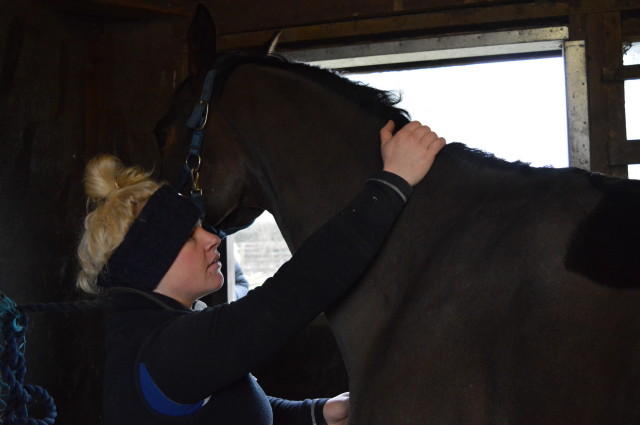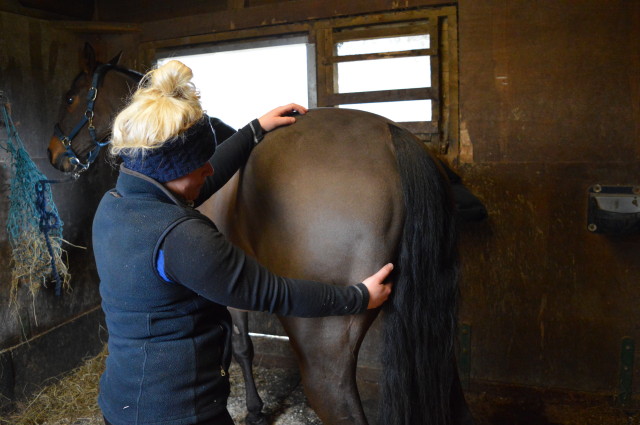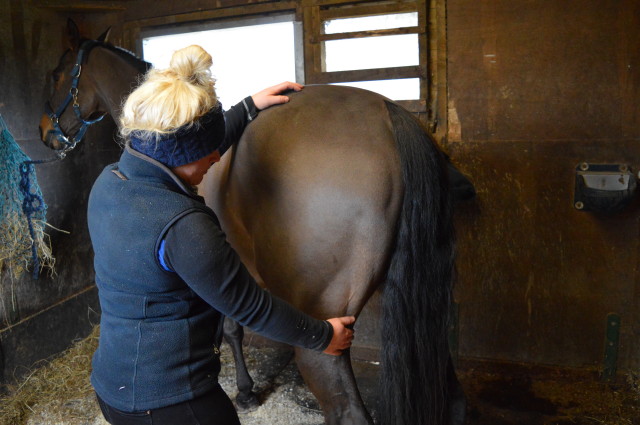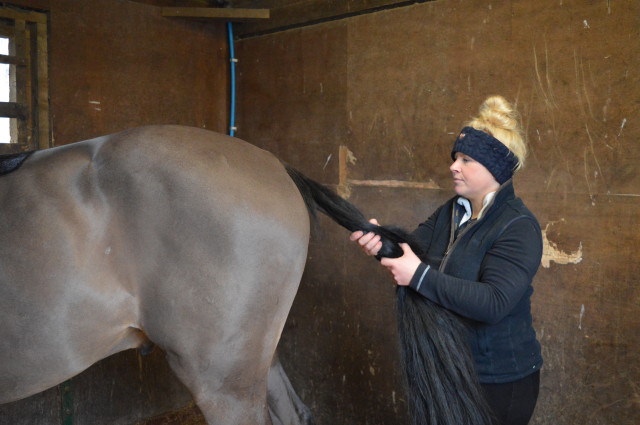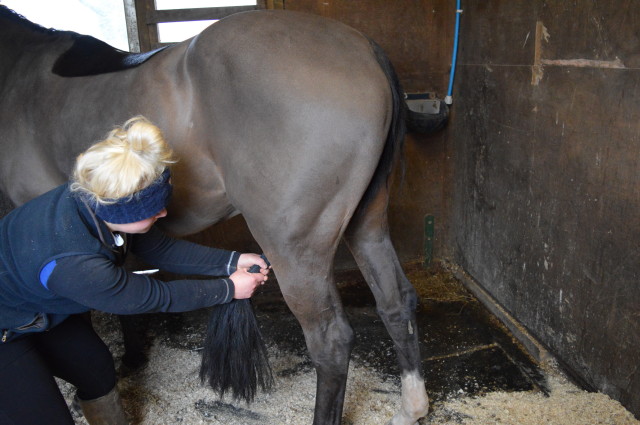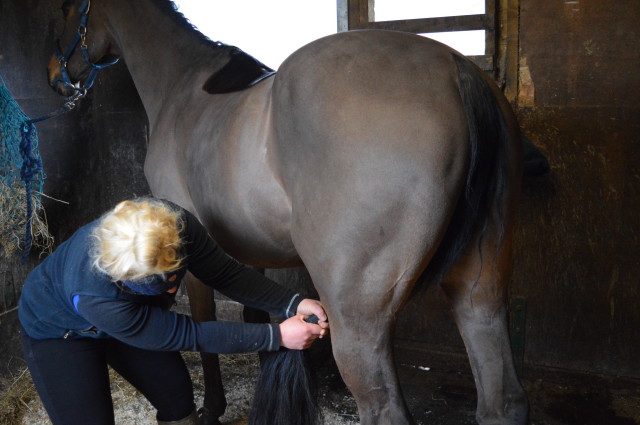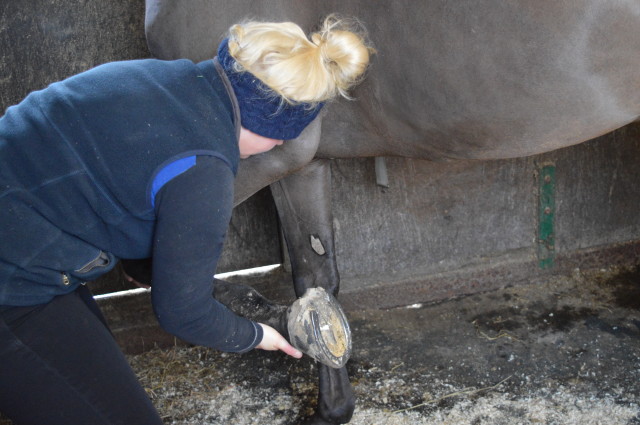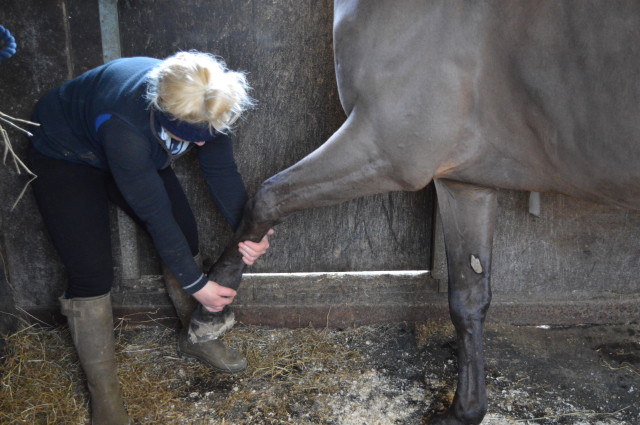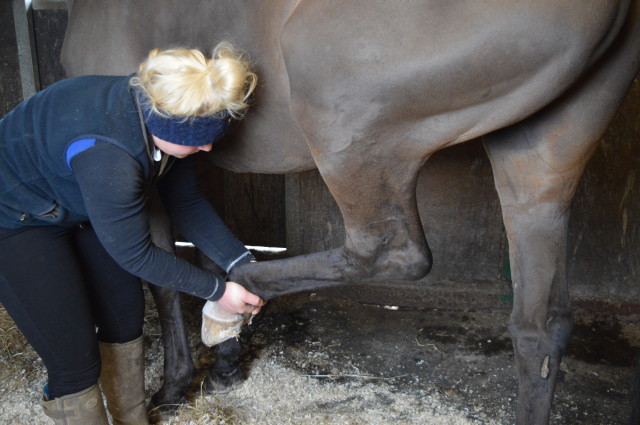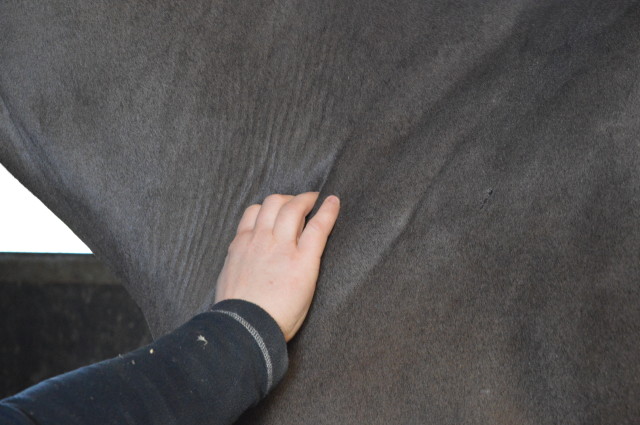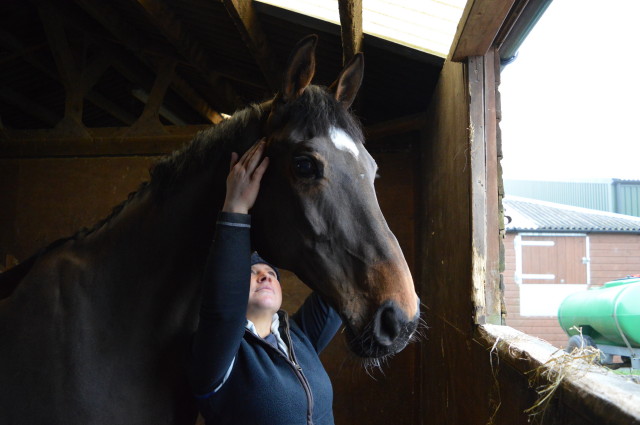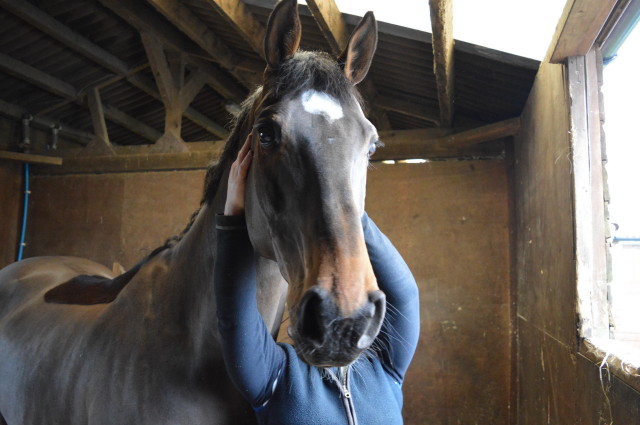Testing if the horse is sore at the withers which could indicate saddle problems or soreness in general.
Releasing stress point inside the elbow. Active stress points contain tension and soreness and the horse will indicate a number of behavioural signs to indicate this.
Moving my fingers down the ribs to stimulate the intercostal muscles. These are the muscles used to aid breathing found between the ribs.
Releasing stress point of the deep gluteal. This is a good one to release as tension builds up over the back.
Deep fibre friction applied to the muscles to release toxins and increase blood flow through the neck.
Stress point inside of the bottom! The horses seem to love this one as it releases lots of toxins and relaxes their tail.
Working my hands down the hamstrings to check for tightness and making the horse aware of where I am so I can work on my next move.
Working on the cranial deep pectoral muscle. This releases tension in the neck and any associated shoulder muscle.
Working on the cranial deep pectoral muscle. This releases tension in the neck and any associated shoulder muscle.
